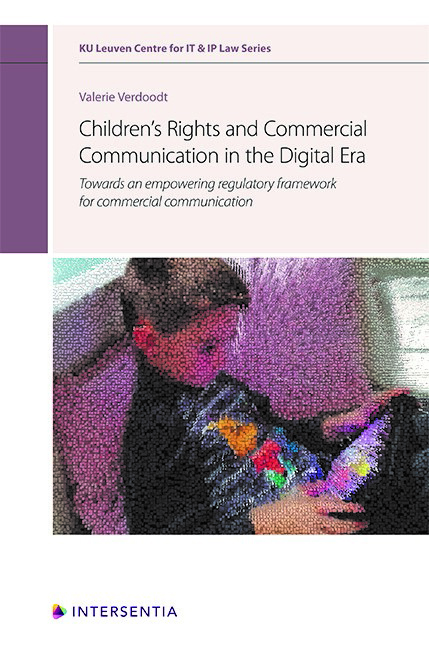 Children's Rights and Commercial Communication in the Digital Era
Children's Rights and Commercial Communication in the Digital Era Book contents
- Frontmatter
- Preface
- Contents
- Abbreviations
- Introduction
- PART I CHILDREN'S RIGHTS AND ADVERTISING LITERACY IN THE DIGITAL ERA
- PART II ASSESSMENT OF THE REGULATORY FRAMEWORK FOR COMMERCIAL COMMUNICATION IN LIGHT OF CHILDREN'S RIGHTS
- PART III ASSESSMENT OF NATIONAL ARIS IN THE AREA OF COMMERCIAL COMMUNICATION
- CONCLUDING REMARKS AND RECOMMENDATIONS FOR THE FUTURE
- Bibliography
- Miscellaneous Endmatter
Chapter I - Setting the Scene
Published online by Cambridge University Press: 23 July 2020
- Frontmatter
- Preface
- Contents
- Abbreviations
- Introduction
- PART I CHILDREN'S RIGHTS AND ADVERTISING LITERACY IN THE DIGITAL ERA
- PART II ASSESSMENT OF THE REGULATORY FRAMEWORK FOR COMMERCIAL COMMUNICATION IN LIGHT OF CHILDREN'S RIGHTS
- PART III ASSESSMENT OF NATIONAL ARIS IN THE AREA OF COMMERCIAL COMMUNICATION
- CONCLUDING REMARKS AND RECOMMENDATIONS FOR THE FUTURE
- Bibliography
- Miscellaneous Endmatter
Summary
Structure of the chapter. As a necessary prelude to the legal analysis, this chapter starts by exploring the essential components of the research topic, being children, new forms of commercial communication and advertising literacy. Second, it continues by discussing the need for a regulatory framework that empowers children to cope with advertising and marketing in the digital environment. Finally, as the research topic is studied from a children's rights perspective, the chapter explains the reasons for and implications of such an approach.
SECTION I. CLARIFICATION OF THE CONSTITUTIVE ELEMENTS
Introduction. To illustrate the issue of new forms of commercial communication aimed at children, this section first clarifies the constitutive elements of this book and then provides an overview of the emerging trends in the area of commercial communication.
CHILDREN, COMMERCIAL COMMUNICATION AND ADVERTISING LITERACY
Definition of a child
NO UNIFORM LEGAL DEFINITION. When studying topics related to children, one comes across a variety of notions to indicate the targeted persons, with ‘minors’, ‘adolescents’, ‘youth’, ‘youngsters’ and ‘young persons’ as some of the terms that are most frequently used. These terms can be found across different legislative and policy documents. First of all, the United Nations Convention on the Rights of the Child has opted for the notion ‘child’, which it defines as “every human being below the age of eighteen years of age unless under the law applicable to the child, majority is attained earlier”. While the drafters of the Convention were eager to ensure a broad application, this provision also safeguards a certain amount of flexibility for those countries in which the legal age of majority is set below or above eighteen years. The legal age of majority determines when children are considered to be adults before the law and when they are allowed to access certain rights or lose certain protections (e.g. the minimum age for consent to engage in sexual activity, or to the processing of their personal data). The age threshold will depend on the purpose of the law or policy in question.16 In the Council of Europe's Cybercrime Convention, the term ‘minors’ is chosen, which entails “all persons under 18 years of age” (unless a Party requires a lower age limit not less than 16 years of age).
- Type
- Chapter
- Information
- Children's Rights and Commercial Communication in the Digital EraTowards an Empowering Regulatory Framework for Commercial Communication, pp. 11 - 54Publisher: IntersentiaPrint publication year: 2020
